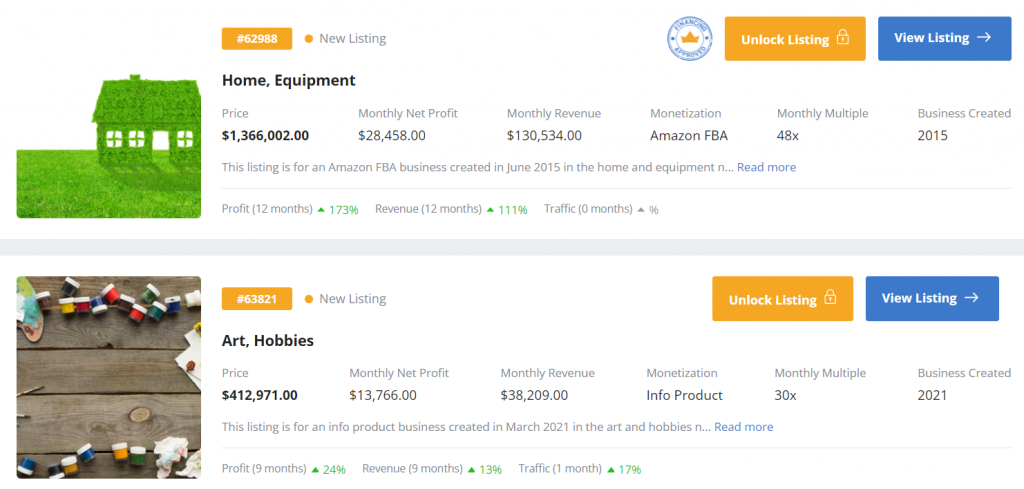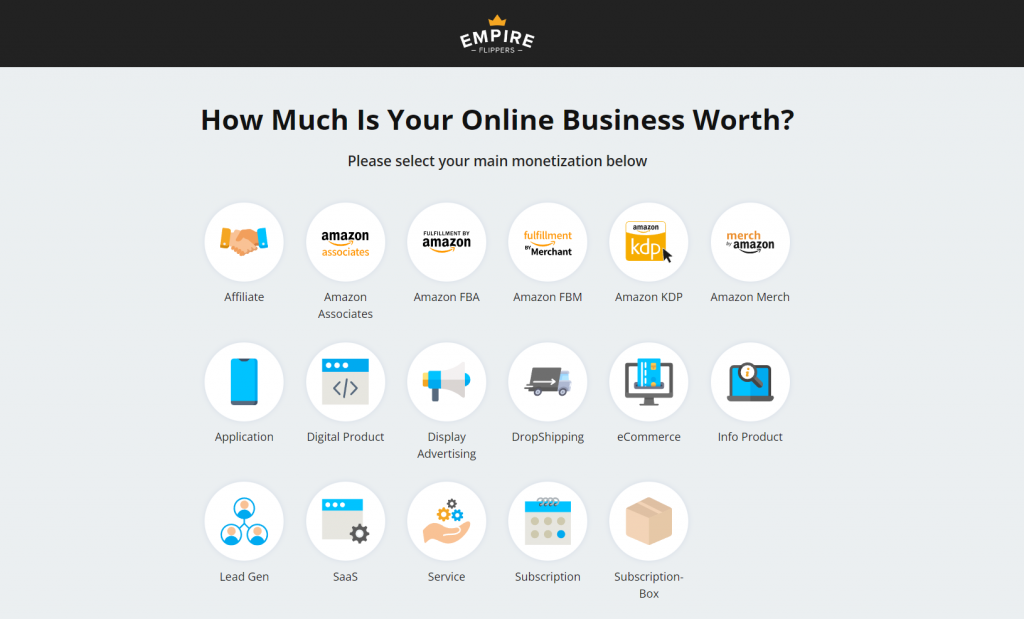How to sell a website for maximum profit in 2025

Selling websites is a profitable way to make money online. A site can be worth 20 to 50 times its monthly net profit.
However, without careful planning and timing, you might miss out on getting maximum profit. Thus, before you sell your website and start a new online business, learning how to optimize it and what makes it valuable is essential.
In this article, we’ll walk you through five steps for selling a website. We’ll also discuss the factors that make a website valuable and answer commonly asked questions about the right time to sell a website.

How to sell a website in 5 steps
If you have decided to sell your website, following a plan will help you do it efficiently and profitably. Here are five steps for selling a website.
Step 1. Evaluate the website
Understanding the website’s value is necessary to avoid selling it below its market price. Likewise, a price set too high risks discouraging interested buyers.
Net profit is total revenue minus operating expenses such as hosting plans, domain names, marketing costs, and employee wages.
In addition to the average monthly profit, consider the multiple of your online businesses. A site’s multiple include valuable assets like traffic sources, revenue streams, domain authority, business age, quality backlinks, and social media following.
These factors are important, as they inform interested buyers about the website’s potential in the long term.
Important! Building low-quality backlinks and using a Private Blog Network (PBN) can lower the multiple, as the site risks getting penalized by search engines.
The average multiple on website listings ranges from 20 to 50. The higher the multiple value, the higher the selling price.

Browsing listings on marketplaces can provide insights into how much various types of websites are worth.
To help you better understand how much the website will be worth, find similar listings to get a realistic expectation of its value. Also, consider talking to a website broker, as they are experienced in the field.
Alternatively, use free website value calculators like Empire Flippers’ valuation tool.

Pro tip
If you’re looking to reduce running costs and increase profit, consider getting our Premium web hosting plan, which includes a free email, SSL certificate, and free domain registration for one year.
Step 2. Increase the website value
If the site’s current worth is lower than expected, you can still take several steps to increase its value before selling it.
Optimize site performance
Optimizing site performance can increase its value as a site that loads slowly will drive visitors away. Some of the best strategies are:
- Use a fast host provider, which is vital to website performance.
- Set up a content delivery network (CDN) to deliver content faster.
- Select a fast-loading theme.
- Remove outdated and unnecessary plugins, which can reduce the site’s speed and threaten security.
Prepare a content strategy
High-quality content will help build audience engagement and attract organic traffic, eventually improving the site’s ranking on search engines and increasing its value.
Additionally, when transferring the site to its new owner, a content strategy will further guide them in maintaining consistent branding and traffic.
To generate quality content consistently, here are several questions to consider:
- Who is your target audience? What are their pain points?
- What type of content will you create?
- What content format will you be using?
- Which channels will you publish it on?
- How often will you publish it?
Expand the traffic sources
Relying on a single traffic source, such as PPC campaigns, is not ideal for increasing site value.
While it’s faster to gain traffic using paid advertising, it solely depends on whether it signals to buyers that they might need to spend a lot on marketing. The more customers you attract from paid advertising, the more money you’ll spend.
Likewise, traffic volume will likely decrease once you stop spending on ads. Hence, you should also invest time growing other sources, including organic and referral traffic.
Referral traffic refers to users who come from other websites. One way to build referral traffic is by writing guest posts for different sites related to the niche.
A steady flow of diverse traffic will increase the site’s value, offering a higher profit margin, better scalability, and long-term stability.
Experiment with various monetization strategies
A site with diverse income sources will be more valuable as it is more financially secure. To diversify your income sources, consider employing these monetization strategies:
- Share affiliate links. Join affiliate marketing programs and earn a commission whenever visitors click on the affiliate links and purchase a product or service.
- Use PPC advertising. Gain revenue each time a visitor clicks on an ad. Google AdSense is the most popular tool for placing ads on a website.
- Accept guest posts. Allow other users to publish their content on your site by paying a fee.
- Sell digital products. Create and offer subscription-based content such as online courses or eBooks.
- Add an online shop. Sell merchandise or offer other products on the site.
Promote the website on social media
An existing following indicates the site has a strong brand and the potential to generate leads. Thus, it’s considered a valuable asset, allowing you to increase the selling price by bundling the website and social media profiles.
To calculate these profiles’ worth, visit websites like Social Tradia, which offers selling and buying services focused on Instagram accounts. Look at the profiles of website creators in your niche and use that information to determine the best price.
If the accounts are not worth as much as expected, promote the site on social media by posting relevant content and sharing links that direct the audience to the website. Use trending hashtags to increase the post’s visibility and broaden audience reach.
Moreover, foster engagement by responding to followers’ questions and comments. If your budget allows, consider investing in paid advertising as well. However, it will increase the site’s operating costs.
Expand your email list
Email marketing is one of the most important sales funnels, with 64% of small businesses using it to engage with customers. It helps foster connections with people interested in your online business and nurtures them in the customer journey.
Having a list of subscribers shows interested buyers the site has an engaged audience and a channel without third-party interference that can be used for monetization.
Add pop-ups and forms to the website to collect the contact details of new visitors. WordPress users can use contact form tools like OptinMonster or WPForms.
Then, send weekly newsletters, offer promo codes, and provide helpful content. When doing so, include links that lead them to your website.
Also, add a call to action (CTA) to pop-ups and emails, using action verbs like “Learn More”, “Download Now”, and “Subscribe to Our Newsletter”. Furthermore, choose a contrasting color to make it stand out from the rest of the content.
Step 3. Find the right marketplace or broker
Finding buyers might be challenging for those new at selling websites, especially if you want to sell them online and independently.
Using a website marketplace or hiring a broker can expose your online business to a larger pool of potential buyers, speeding up the process.
With many marketplaces and brokers available, it’s important to choose a reputable one that fits your website type and conditions. Some popular marketplaces include Flippa, Empire Flippers, and Motion Invest.
While some only accept eCommerce and content sites, others list SaaS businesses and mobile services. Thus, conduct prior research on each marketplace and carefully analyze their terms of service.
Some of the key factors to consider when looking for the right marketplace are:
- Commission structure. Some websites charge a higher listing fee for sites with lower value and vice versa. Also, check whether they charge only a listing fee or if there are post-sale commissions.
- Listing information. Usually, the website seller needs to provide traffic data, revenue, and operating costs. Interestingly, Empire Flippers hides the site’s URL, whereas Flippa doesn’t.
- Communication methods. Consider how the marketplace facilitates buyer communication through public comments, private messaging, or scheduled calls.
- Escrow service. Find out if the marketplace provides escrow services or requires you to hire a third-party service for secure online transactions.
- Website migration. Check whether it facilitates the website transfer and if it charges an extra fee for it. For instance, Empire Flippers offers a free website migration service, whereas Flippa delegates the task to the respective sellers and buyers.
- Due diligence. Check if you should do due diligence or if the marketplace will assist you. This entails reviewing legal documents to ensure both sellers and buyers are legitimate.
Step 4. Prepare financial and traffic reports
When convincing potential buyers, merely claiming the site has significant profit growth potential is ineffective. Buyers will want evidence, so backing up such claims with data is necessary.
A well-structured financial and traffic report helps to establish credibility and efficiently communicate the site’s value.
Moreover, marketplaces and website brokers typically require sellers to submit a profit and loss statement and a traffic report for the listing. Verified buyers will then get read-only access to the statistics.
To obtain traffic statistics, link the website to a web analytics or search engine optimization tool like Google Analytics, Semrush, or Ahrefs.
Google Analytics, for example, provides data on monthly page views, traffic sources, and traffic data according to channels or segments. Additionally, it shows unique visitors, the growth rate, and which countries bring in the most visitors.
Using this data, buyers can identify opportunities to grow the site and determine if its target market corresponds to their needs.
On the other hand, a profit and loss statement details your business’s revenue and expenses for a specific period. Generally, most marketplaces and website brokers require six to 12 months of reports.
If the site has multiple sources of income – for example, it makes money from Google Ads and direct advertising – make sure to break down how much each source generates.
Additionally, list the monthly gross revenue and profit. Remember to add your net margin, calculated by subtracting the total expenses from the revenue generated. The monthly profit should be higher than the outgoing expenses.
Pro tip
Remember that a small mistake can create a wrong impression and jeopardize credibility. So, be very thorough when making a profit and loss statement. Handing the task to a professional bookkeeper for larger websites can be a better option.
Step 5. Optimize your profits before making a listing
Before listing an eCommerce site, for example, it’s best to reduce your involvement in the online business. When doing so, look out for cost-saving options to maximize profit.
Consider hiring a virtual assistant for day-to-day business operations, as they charge online businesses according to their working hours.
Delegate content production by hiring reliable content writers and designers on freelance websites like Upwork and Fiverr.
To keep branding consistent, create a style guide document outlining the content’s current tone and voice.
Moreover, if you’re running an eCommerce store, seek third-party services to manage order fulfillment and automate the business process.
Some reputable eCommerce fulfillment services include Amazon FBA, ShipNetwork, and ShipBob.
Also, ensure all necessary data related to the site is transferrable.
For example, if you handle emails on a personal account, get a professional email address so you don’t get caught up in the new owner’s business. Furthermore, a professional email hosting service streamlines communication and establishes credibility.
How a website’s value is determined?
Whether you want to sell your website or start a website-flipping business, understanding how a website is valuable is necessary.
For website owners, determining the site’s worth can help you decide whether to sell it or continue to rely on its monthly revenue.
Here are some factors that influence it.
Niche
A site’s niche is important, as market demand will help determine its revenue potential.
If the site operates within a popular niche, it will likely receive more traffic, and you can sell your website at a higher price.
Some of the most profitable blog niches include food, personal finance, lifestyle, and travel. Food blogs alone generate a median income of $9,169/month. Comparatively, personal finance blogs earn $9,100/month, whereas travel blogs cost an average of $5,000/month.
These evergreen niches have a stable demand year-round, so they will likely continue generating traffic despite changing trends.
Visitors
The number of visitors a website receives is another factor in determining its worth. No matter if it has high-quality content and design, a site that doesn’t attract visitors will not attract buyers.
Driving traffic to your site will create more opportunities to generate leads and grow conversion rates, leveraging its position in the market.
Analyzing its traffic sources is a great way to determine what works and what doesn’t. In addition to quantity, traffic quality also matters.
The site should attract visitors who can benefit and engage with it. To determine visitor engagement, evaluate metrics like average time on page, average pages per session, and bounce rates.
Use tracking tools like Ahrefs and Google Analytics to calculate a site’s traffic value.
SEO
A site with an effective search engine optimization (SEO) strategy will have a higher value, as it signals organic traffic growth potential to buyers.
This entails having high-quality content, building quality backlinks, and maintaining website performance.
Moreover, the site should be optimized for any device, as 60% of Google searches come from mobile devices.
While growing and maintaining organic search traffic takes more time and effort, websites with good SEO have further value for potential buyers.
Pro tip
Check out our complete guide on WordPress SEO best practices to improve your site’s rankings.
Sources of income
Another factor determining a site’s value is its monetization methods.
A website that generates revenue from multiple sources will likely have a higher selling point than those that rely on a single income source.
For example, let’s say you have a food blog. Instead of only sharing Amazon affiliate links to cooking utensils, generate revenue by running ads for a restaurant or starting a subscription-based cooking course.
That way, if Amazon lowers its affiliate commission rates, you can still display advertising on the website and sell digital products to generate revenue.
Thus, a website with diverse income streams has financial stability and better growth potential than those with one source of income.
Broker
If you find the website valuation process confusing, you can hire a website broker to do the job.
Website brokers are individuals or companies that sell sites. In addition to evaluating a website’s worth, they are responsible for marketing it, negotiating prices with potential buyers, and securing deals.
In exchange for their services, brokers typically charge clients a 6 to 15% commission fee for each website sale. Thus, consider that amount when calculating how much to sell your website for.
Working with a broker speeds up the sales process compared to independently selling your website. Brokers have access to a list of credible buyers, which minimizes the risk of falling for scams and making mistakes in legal documents.
Moreover, brokers can help prevent selling a website for less than its value, as they know its potential.
Marketplace
Some website marketplaces partner with brokers and allow users to list their sites for sale independently. Others operate similarly to online auction sites like eBay.
Like website brokers, marketplaces typically charge either a listing or success fee, which is generally between 5 and 15% of the sale.
Websites usually sell for a fixed price or follow an auction model. For auction listings, sellers place a minimum price, and buyers who bid the highest price within 30 days can buy the website.
In this case, while your site’s value will also depend on the bidders, it’s important to set a price similar to its market value.
Suggested reading
Besides selling a website, you can earn money by reselling website hosting. Read our in-depth guide to learn more.
Conclusion
Selling websites for maximum profit requires careful planning and work. Before entering this online business, knowing what influences a site’s market value will help you set the right price and attract buyers.
Remember that investing time and effort in increasing site value is necessary for a successful selling process. This includes expanding traffic sources, preparing a content strategy, and establishing a solid social media presence.
To find buyers quickly, consider finding a marketplace or broker. Conduct prior research on their terms and services, especially their commission structure.
Then, prepare financial and traffic reports as evidence of the site’s performance and growth potential.
Finally, test different strategies to optimize profits and ensure the site is ready to be transferred to a new owner. The less involvement you have with the site as the transfer approaches, the better.
Now that you know how to sell a site, it’s time to evaluate its worth and plan to increase its value before listing it on the market. Good luck.
How to sell a website FAQ
How long does it take to sell a website?
Generally, it takes 30 to 120 days to sell a website on a marketplace or through a broker. The vetting and listing process itself typically takes five to seven days. Then, the selling period varies depending on negotiation with buyers, competition with other online businesses, and each website’s conditions. A well-optimized website will likely sell faster, so invest in the site before selling it.
What is the most expensive website ever sold?
Business.com is the most expensive website sold – it was valued at $345 million in 2007. A business news and resource content site’s value is mainly attributed to having a premium domain name that influences its SEO success. Currently, the site receives more than 10 million visitors every month.
What is the best time to sell a website?
The best time to sell your website is during its peak value – when it generates steady net profit, has healthy traffic statistics, and performs well. Avoid selling too early, as relatively new websites have less track record. A general rule is to run your site for at least a year before selling it.
How do you sell a website to a client?
To sell a website to a client, showcase its performance metrics, user base, and revenue potential. Create a detailed valuation and report on the site’s benefits. Negotiate terms, finalize the sale using a secure payment method, and ensure a smooth transfer of ownership to ensure client satisfaction.



